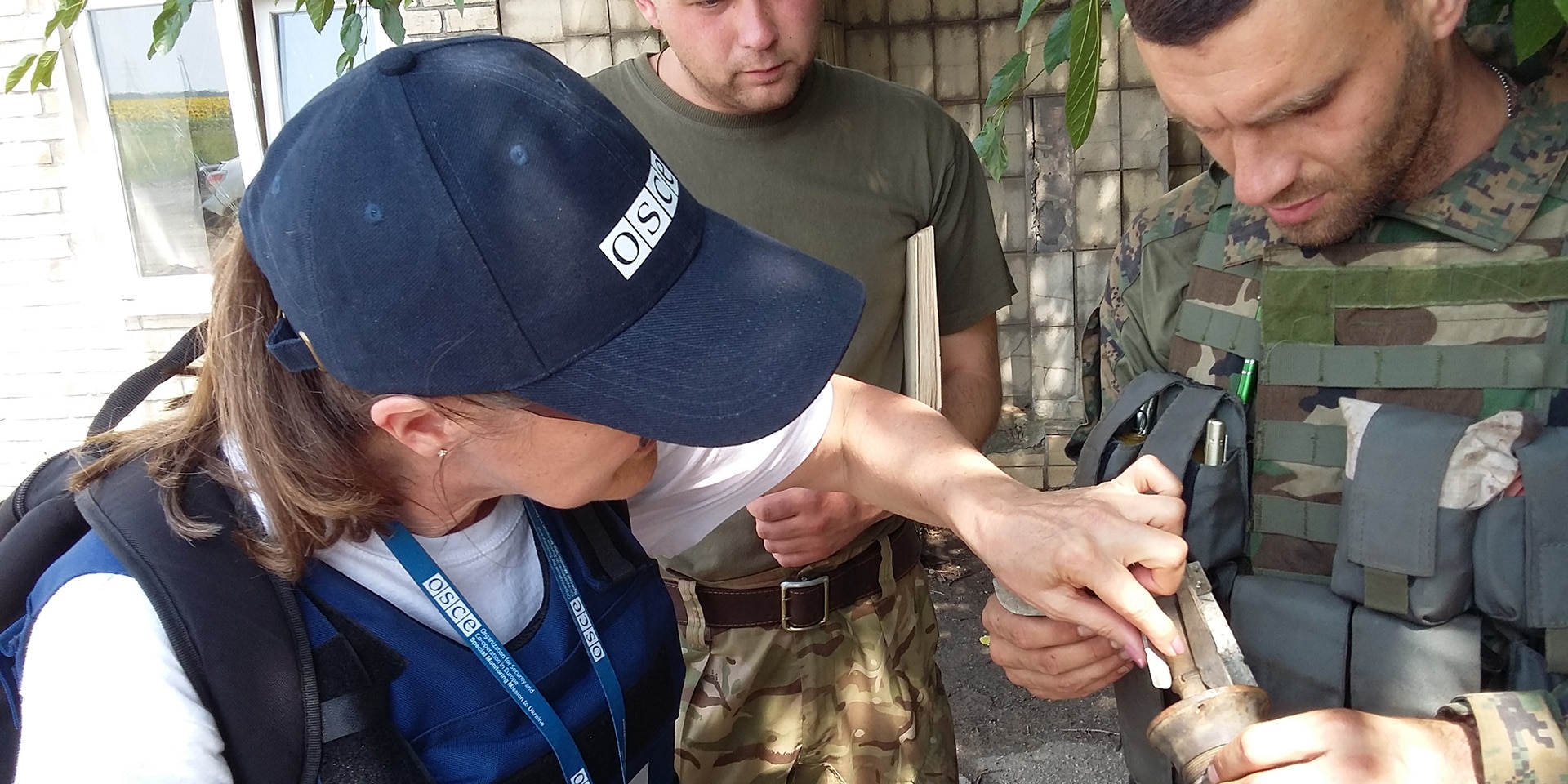OSC...eh?
What is the Organization for Security and Co-operation in Europe (OSCE) exactly? And what does it have to do with a washing machine spin cycle? Find out here.

Working for the Organization for Security and Co-operation in Europe (OSCE) @ FDFA
Why did the young Swiss woman meet the Swiss foreign minister along with 56 young people in Vienna in January 2014? Why was a senior diplomat – then Swiss ambassador to Germany – rushed to Kyiv as a ‘personal envoy’? And why does a prisoner step over the threshold of a jail into freedom in relief? The OSCE is behind it all.
An example of the OSCE’s work: the OSCE secures a prisoner’s release
Swiss diplomats working on behalf of the OSCE are often instrumental in preparing the release of prisoners.
What else does the OSCE do occasionally in addition to numerous other projects? OSCE sends an envoy to deal with a crisis
The Swiss ambassador in Berlin becomes the OSCE chair’s personal envoy and is rushed to Kyiv. His job is to look for solutions to a crisis that reached a climax in March 2014 when Vladimir Putin announced Russia’s annexation of Crimea.
Example of the OSCE’s activities: OSCE involves young people
Simulating a ‘real’ OSCE meeting, the young woman is engaged in a discussion with a large group of peers, eye-to-eye with the acting OSCE chair-in-office. She is involved in the Youth for Security and Cooperation project, in which she helps negotiate a youth action plan. One goal of the ‘Model OSCE’ is to get young people more involved in the organisation through simulation of OSCE’s work.
The OSCE: the largest regional security organisation worldwide
The OSCE is the largest regional security organisation in the world. It has 57 ‘participating states’. The international organisation was established in 1975, in the midst of the Cold War, as a confidence-building forum between East and West.
The conference of states focuses on security in a broad sense: it addresses traditional security issues such as information sharing on the deployment of armed forces, planned manoeuvres and disarmament. The participating states share information on police issues such as the fight against terrorism, cyber crime and border protection. In addition to its election observation missions, the OSCE works to promote human rights and democracy. It also addresses economic and environmental issues, particularly in places where these affect a country’s security.
Today the OSCE no longer plays such a central role in politics as it did when it was set up during the Cold War. It continues to provide a useful platform for communication and does essential work in the field. It is equipped with important tools for preventing or mitigating conflict and for strengthening human rights and democracy.
The OSCE has offices in Vienna and elsewhere
- The OSCE’s activities are discussed by the Council of Permanent Representatives in Vienna (Permanent Council)
- and the Forum for Security Co-operation (FSC) on a weekly basis.
- The OCSE’s projects are implemented by its 16 field missions
- and the OSCE’s institutions:
- The OSCE Office for Democratic Institutions and Human Rights in Warsaw
- The High Commissioner on National Minorities in The Hague and
- The Representative on Freedom of the Media in Vienna.
OSCE Ministerial Council meets once a year – Federal Councillor Ignazio Cassis takes part virtually in 2020
The foreign ministers of the participating states meet once a year for the OSCE Ministerial Council. Federal Councillor Ignazio Cassis is due to take part virtually in this year’s ministerial conference conducted by Albania on 3 December. The annual ministerial conference is typically hosted by the country holding the OCSE chairmanship that year (2020: Albania).
Key role of the country holding the chairmanship
The country holding the OSCE chairmanship has a key role to play. The teams working for the various OSCE participating states need additional resources to cope with the intense workload during their country’s chairmanship year. Unlike in the Council of Europe in Strasbourg, for example, the diplomats of the chairing country prepare all the decisions and represent the OSCE externally.
Switzerland held the OSCE chairmanship in 1996 and 2014. At the time, in an FDFA internal publication, a Swiss female diplomat compared the work carried out in this intense period to a washing machine spin cycle.
OSCE short portrait
- Established in 1975 as the Conference on Security and Co-operation in Europe (CSCE), renamed in 1994 as Organization for Security and Co-operation in Europe (OSCE)
- Regional security organisation as set forth in Section VIII of the UN Charter
- 57 participating states: all European countries plus the US, Canada and all successor states of the Soviet Union
- 6 Mediterranean countries as partners: Tunisia, Algeria, Morocco,
- Egypt, Jordan and Israel
- 6 Asian partners: Afghanistan, Japan, Thailand, Mongolia, South Korea and Australia
- 16 field missions, mainly in the Balkans, South Caucasus and Central Asia
- Annual budget: around 150 million euros (approx. 70% of which is llocated to field activities)
- comprehensive three-dimensional security concept:
- The politico-military dimension
- The economic and environmental dimension
- The human dimension (human rights and democracy)
- Chairing country plays an important role, effectively managing the organisation
- Decisions taken by consensus
